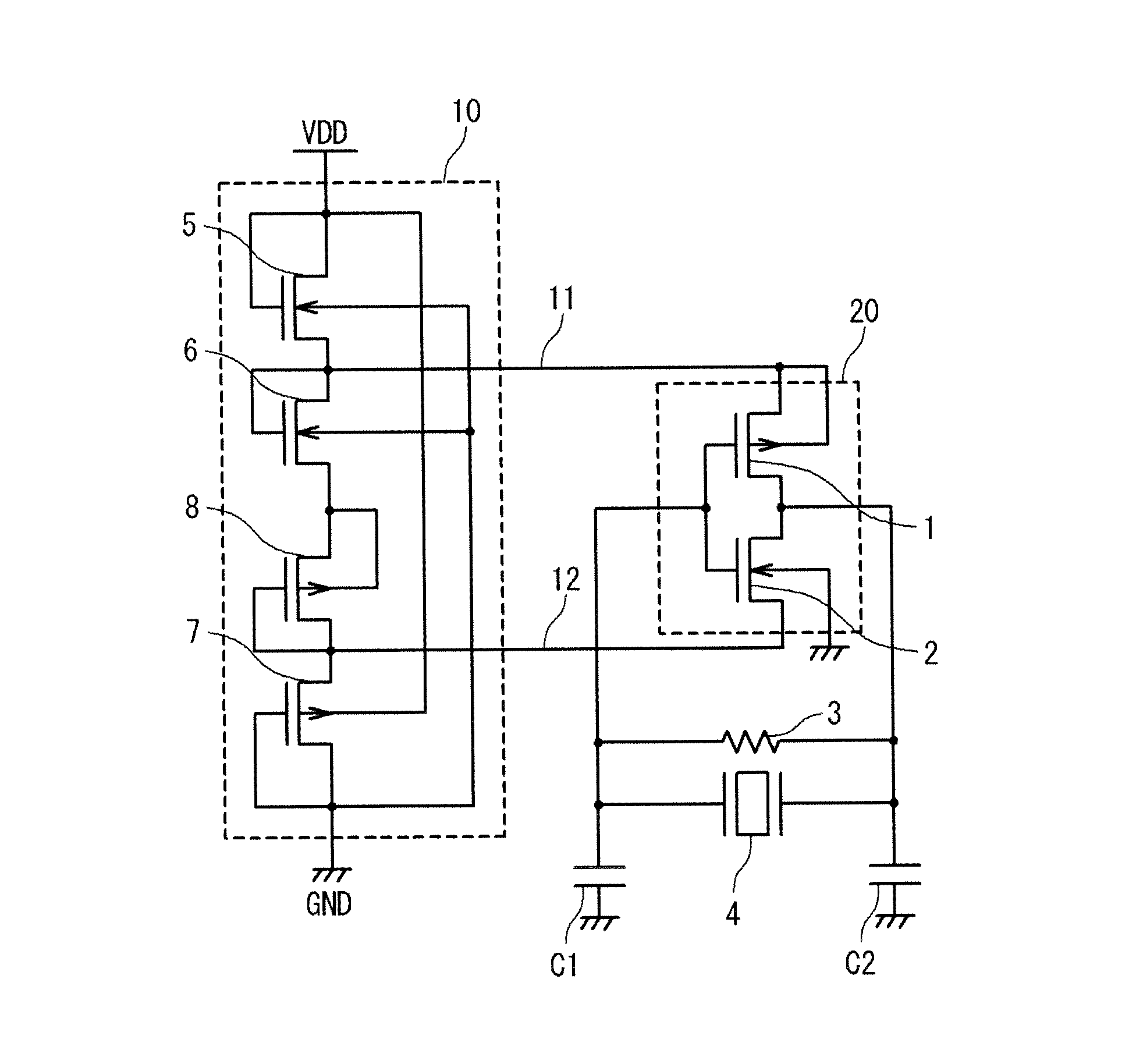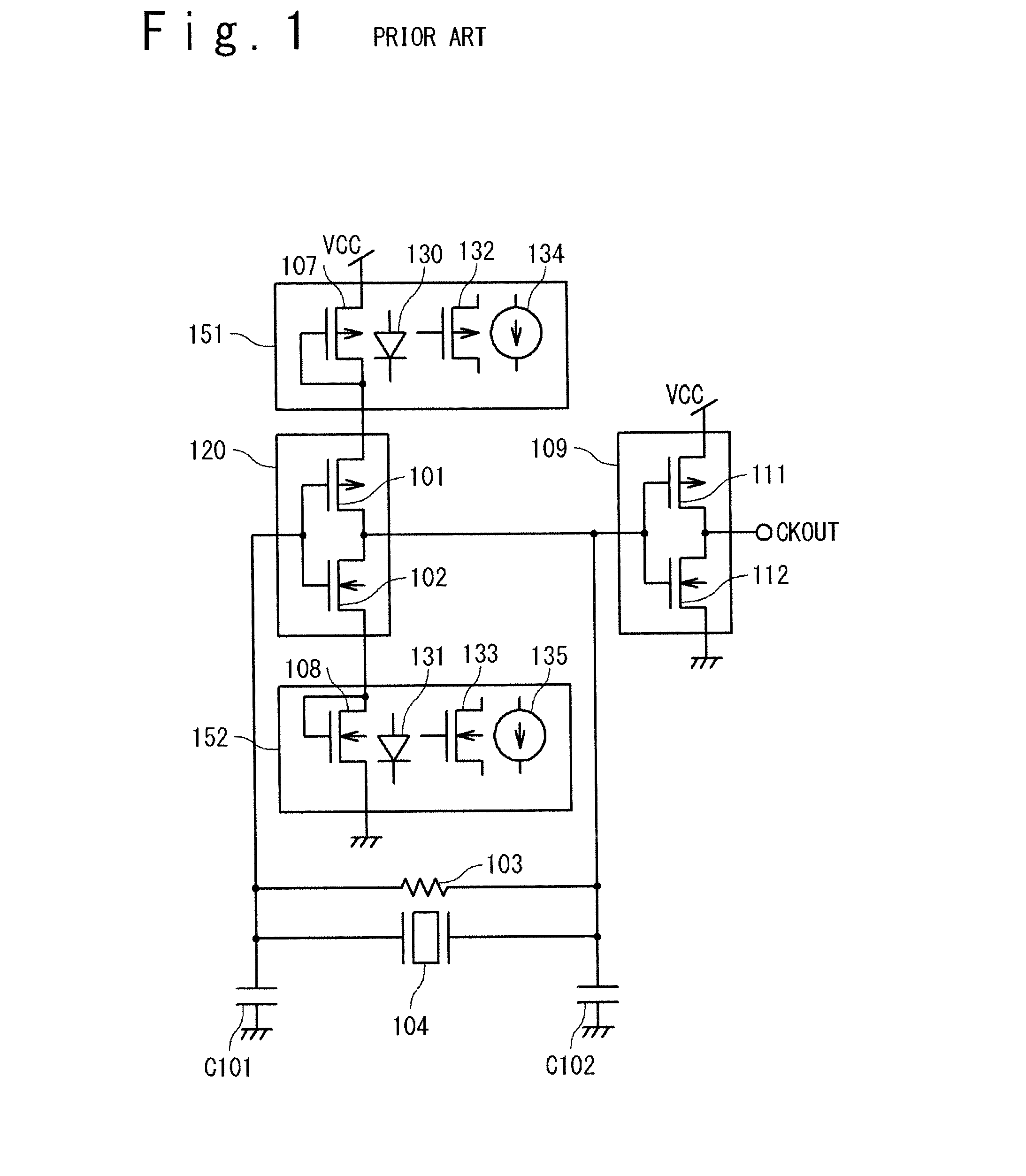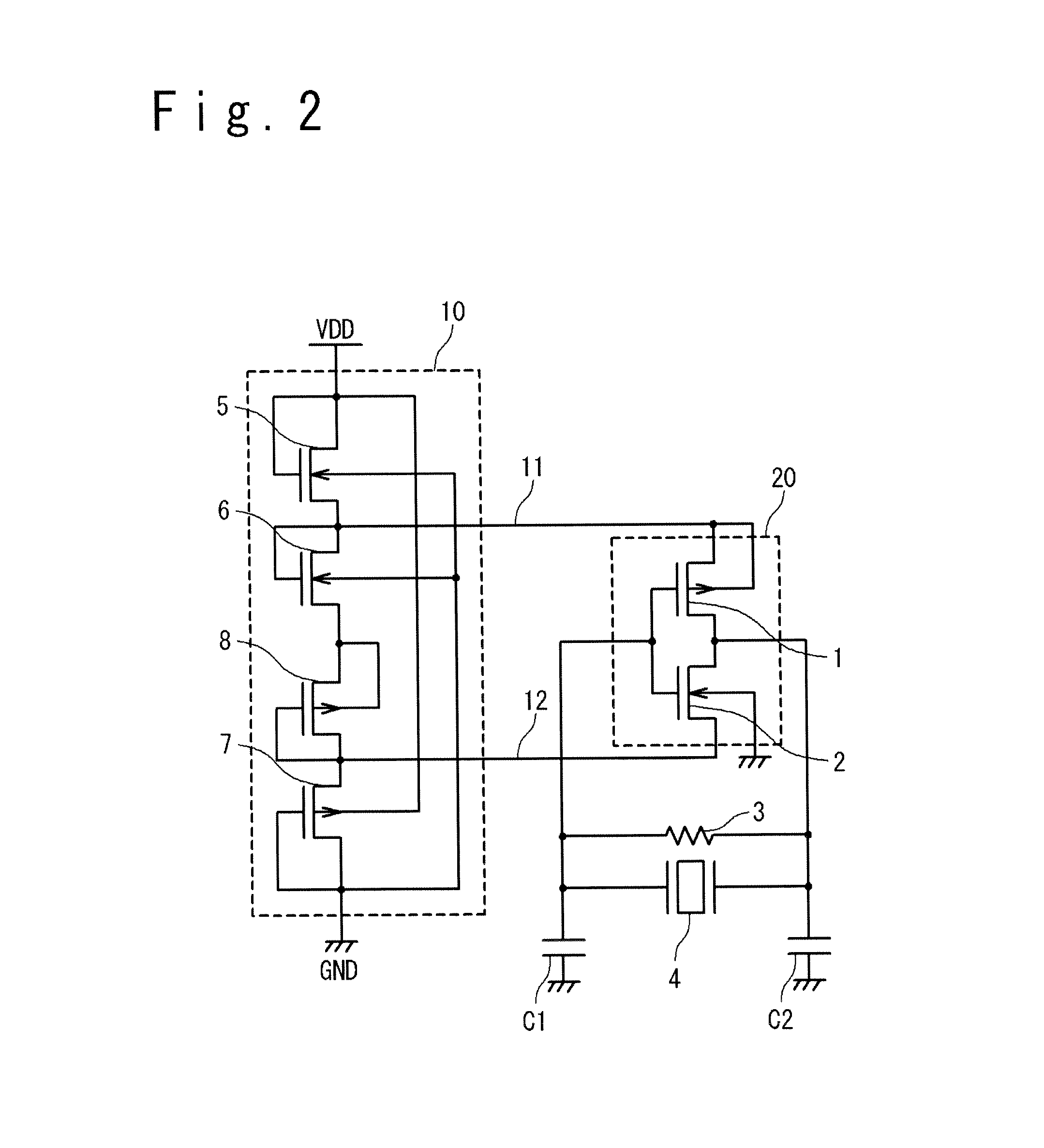Semiconductor device
a technology of semiconductors and transistors, applied in the direction of pulse automatic control, generator stabilization, oscillation generators, etc., can solve the problems of inability to estimate the direction of process deviation, influence on the operation of transistors, etc., to reduce the threshold voltage reduce the consumed power amount of the oscillation circuit section, and reduce the area of each mos transistor
- Summary
- Abstract
- Description
- Claims
- Application Information
AI Technical Summary
Benefits of technology
Problems solved by technology
Method used
Image
Examples
first embodiment
[0032]FIG. 2 is a graphic diagram showing the configuration of the semiconductor device according to a first embodiment of the present invention. Components of the semiconductor device shown in FIG. 2 will be described. The semiconductor device shown in FIG. 2 is provided with a power supply voltage VDD, a ground GND, an amplitude control circuit section 10, an oscillation gate circuit section 20, a feedback resistance 3, a resonator 4, an input side capacitor C1 and an output side capacitor C2. The amplitude control circuit section 10 is provided with first and second NMOS transistors 5 and 6, and first and second PMOS transistors 7 and 8. The oscillation gate circuit section 20 is provided with a PMOS transistor 1 and an NMOS transistor 2. Here, the oscillation gate circuit section 20, the feedback resistance 3, the resonator 4, the input side capacitor C1 and the output side capacitor C2 may be collectively referred to as an oscillation circuit section.
[0033]The connection relati...
second embodiment
[0062]FIG. 6 is a diagram showing the configuration of the semiconductor device according to a second embodiment of the present invention. The semiconductor device in the present embodiment is attained by applying the following modifications to the semiconductor device according to the first embodiment of the present invention shown in FIG. 2. That is, in the semiconductor device of FIG. 2, the back gate of the second PMOS transistor 8 is connected with the source of the second PMOS transistor 8 and the source of the second NMOS transistor 6 in common. Also, in the semiconductor device of FIG. 2, the back gate of the second NMOS transistor 6 is grounded. However, in the semiconductor device of the present embodiment, the back gate of the second NMOS transistor 6 is connected with the source of the second PMOS transistor 8 and the source of the second NMOS transistor 6 in common. Also, in the semiconductor device of the present embodiment, the back gate of the second PMOS transistor ...
third embodiment
[0066]FIG. 7 is a circuit diagram showing the configuration of the semiconductor device according to a third embodiment of the present invention. The semiconductor device of FIG. 7 is attained by applying the following modifications to the semiconductor device according to the first embodiment of the present invention shown in FIG. 2. That is, a control circuit section 36 and a selector circuit section 40 are added.
[0067]An amplification factor of the oscillation circuit in which the circuit configuration containing a transistor size has been determined, changes according to the current flowing through the oscillation circuit (or, the voltage applied to the oscillation circuit). Generally, in the oscillation circuit, the amplification factor which is required to start the oscillation is higher than the amplification factor which is required to sustain the oscillation. In other words, when the current which flows through the oscillation gate circuit section 20 (or, the voltage which ...
PUM
 Login to View More
Login to View More Abstract
Description
Claims
Application Information
 Login to View More
Login to View More - R&D
- Intellectual Property
- Life Sciences
- Materials
- Tech Scout
- Unparalleled Data Quality
- Higher Quality Content
- 60% Fewer Hallucinations
Browse by: Latest US Patents, China's latest patents, Technical Efficacy Thesaurus, Application Domain, Technology Topic, Popular Technical Reports.
© 2025 PatSnap. All rights reserved.Legal|Privacy policy|Modern Slavery Act Transparency Statement|Sitemap|About US| Contact US: help@patsnap.com



